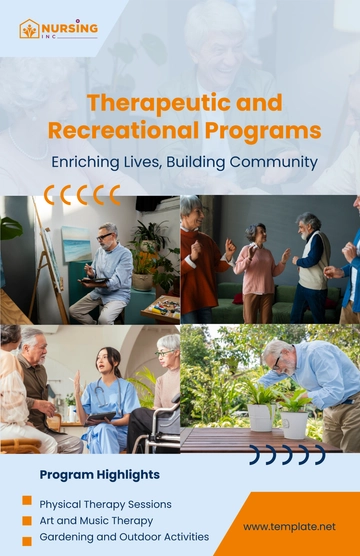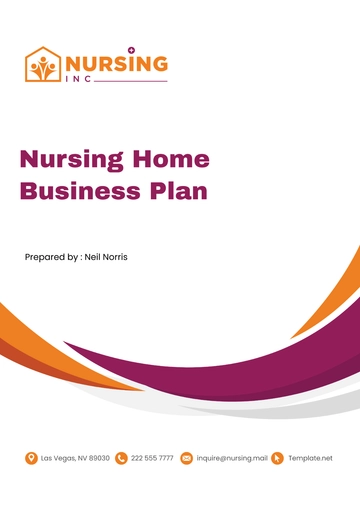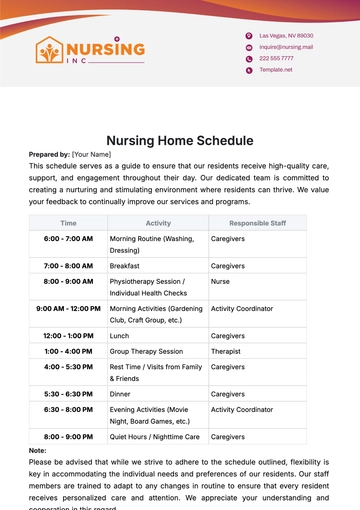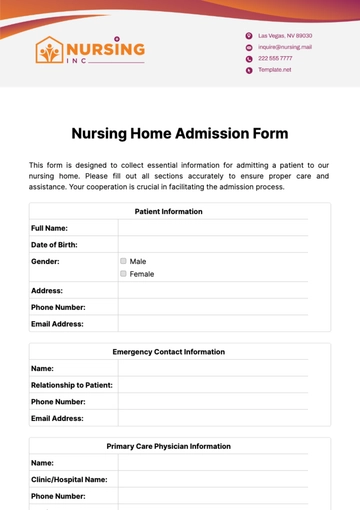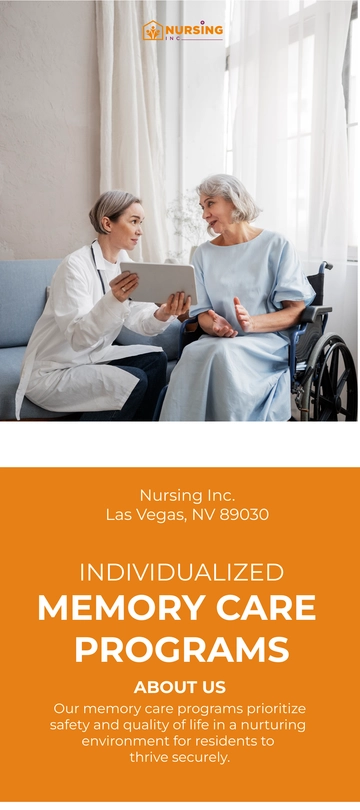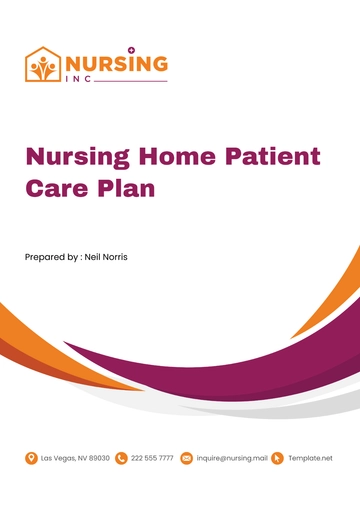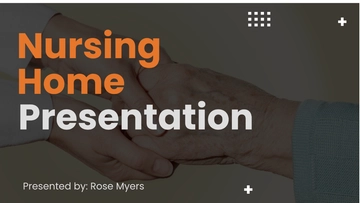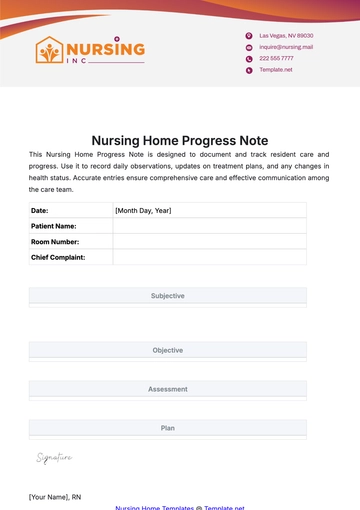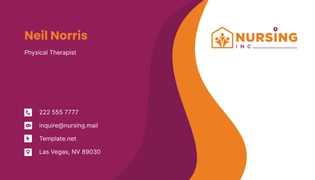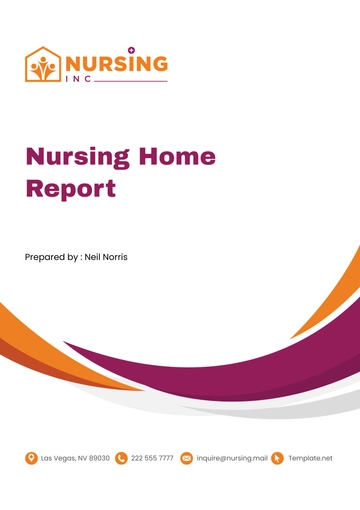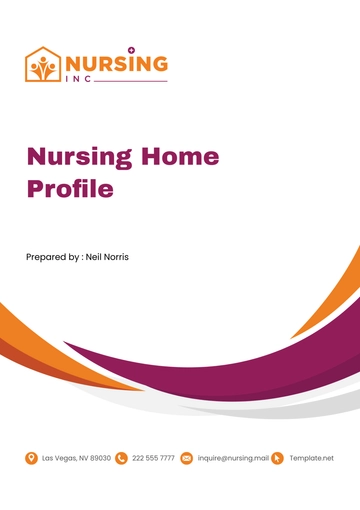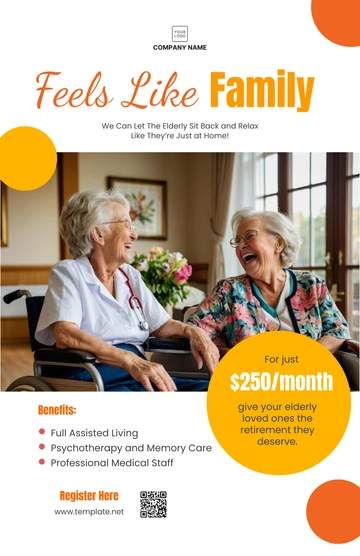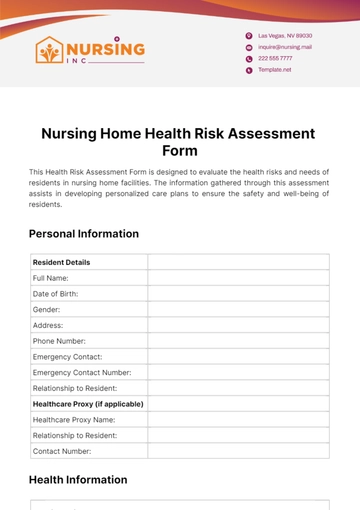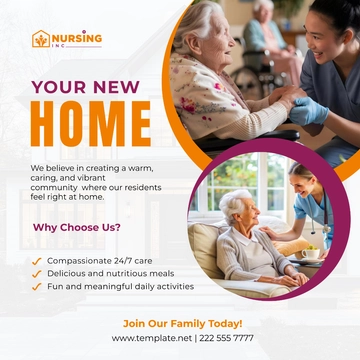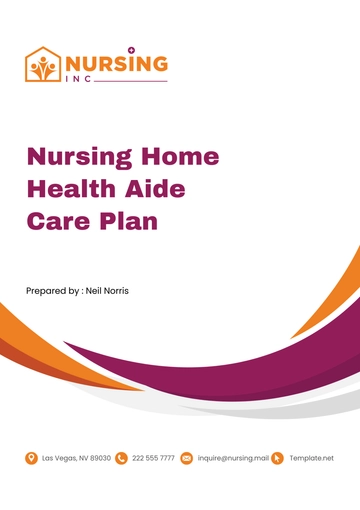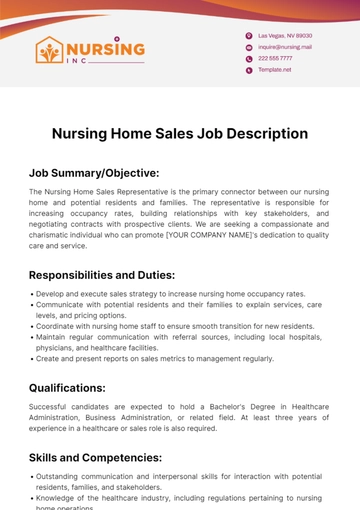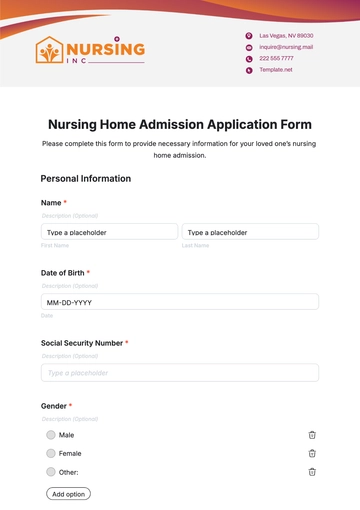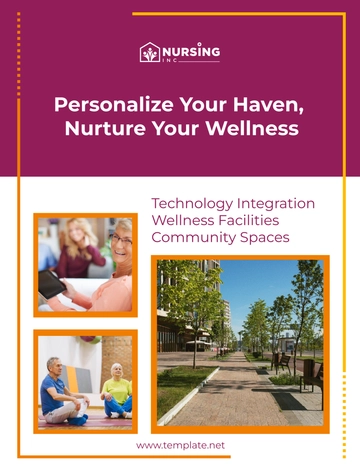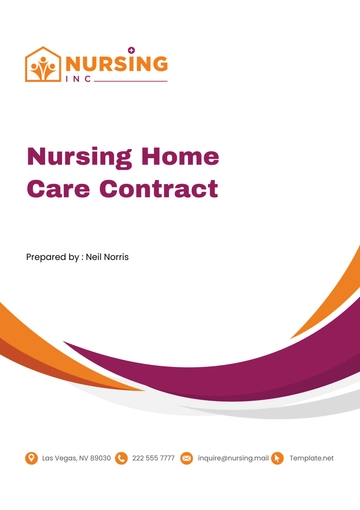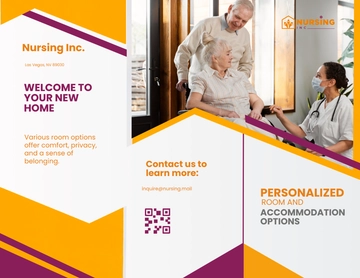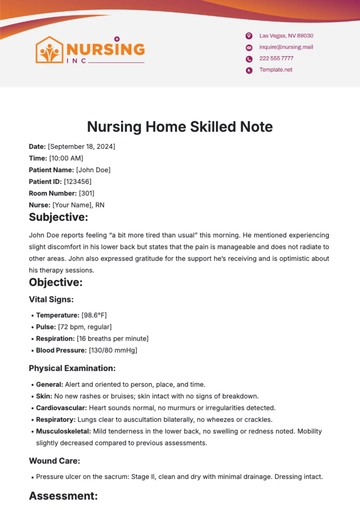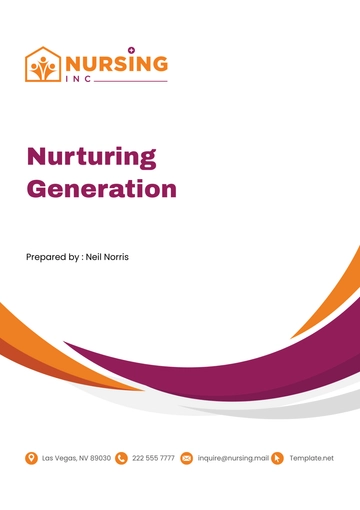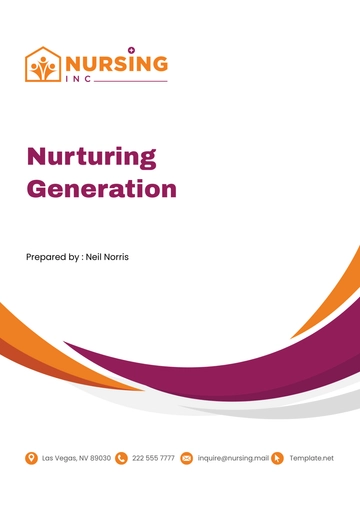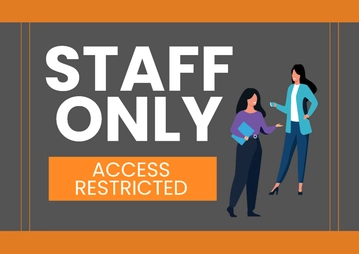Free Nursing Home Resident Admission Process Guide
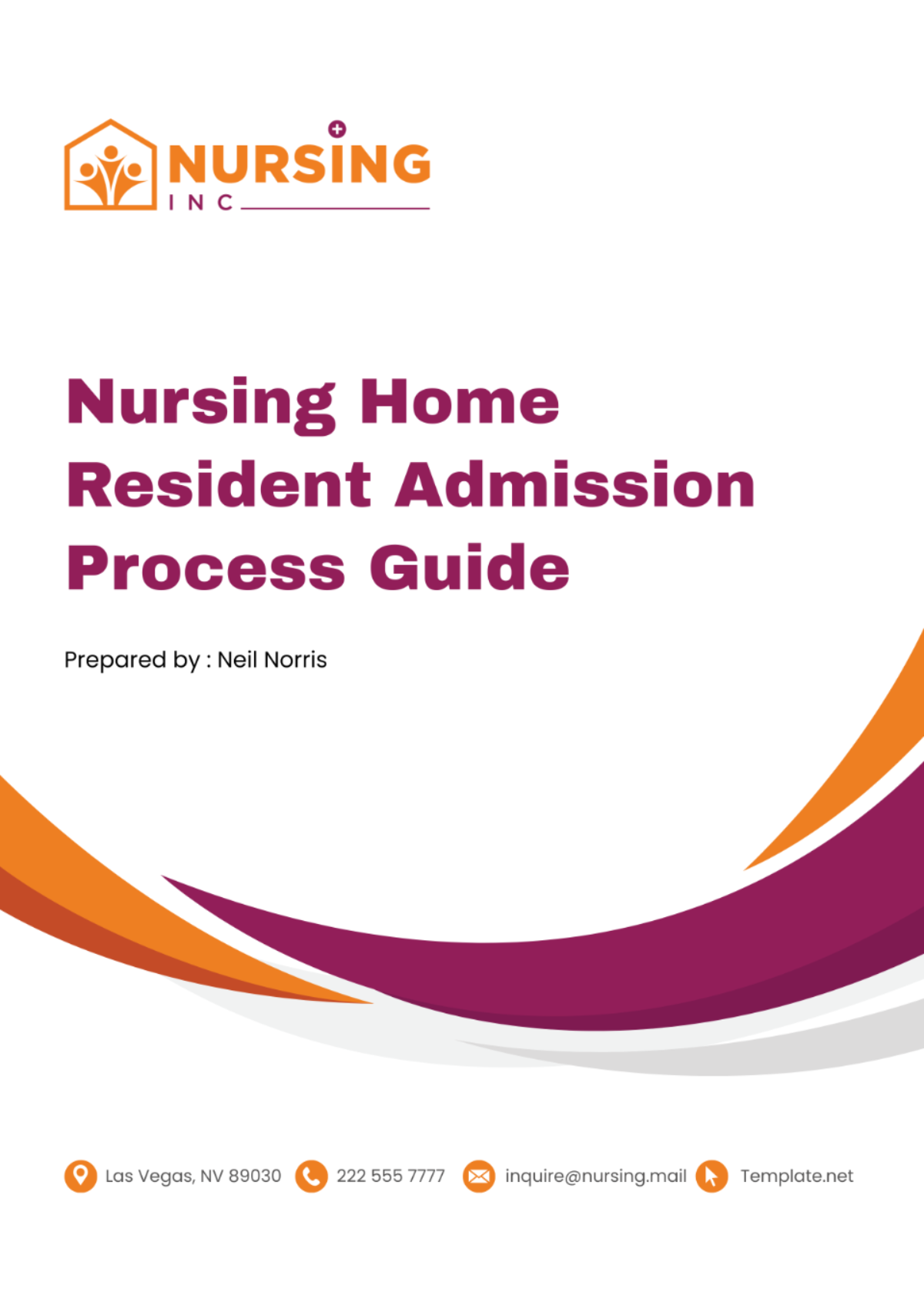
I. Introduction
Welcome to [Your Company Name]!
This guide has been designed to assist you and your family through the admission process into our nursing home. Our mission is to provide a caring, supportive, and compassionate environment that fosters the well-being of all our residents. Should you have any questions or require further assistance during the admission process, please do not hesitate to contact our admissions coordinator at [Your Company Number] or [Your Company Email].
II. Pre-Admission Requirements
A. Documentation Needed
To ensure a smooth admission and to comply with legal and health requirements, please prepare the following documents:
Document Type | Description |
|---|---|
Personal Identification | Government-issued ID, birth certificate |
Medical History and Records | Including immunization records, hospital discharge summaries |
Medication List | Current medications with dosages and schedules |
Legal Documents | Power of Attorney, Advance Directives, DNR orders, guardianship papers |
B. Financial Arrangements
Understanding the costs associated with care is crucial. Below is an outline of our billing procedures and payment options:
Costs and Billing: A detailed breakdown of monthly fees, ancillary charges, and what services are covered under various payment plans.
Insurance Verification: We accept most major insurance plans and Medicaid. Please provide insurance cards and authorization forms so we can verify coverage prior to admission.
Payment Plans and Financial Aid: For those who qualify, we offer sliding scale fees and assistance in applying for Medicaid.
III. Admission Assessment
A. Initial Health Assessment
Upon admission, our team conducts a comprehensive evaluation to establish a personalized care plan. The assessment includes:
Physical Exam: Conducted by our licensed nurses and includes blood pressure monitoring, heart rate, respiratory function, and mobility assessment.
Cognitive and Emotional Assessments: Performed by our mental health professionals, this includes memory tests and discussions to understand emotional well-being.
Special Care Needs: Evaluation for sensory impairments (vision, hearing), speech difficulties, and any prosthetic requirements.
B. Risk Assessment
Identifying potential risks early helps in providing a safe environment for our residents:
Risk Category | Assessment Method | Purpose |
|---|---|---|
Fall Risk Evaluation | Mobility and balance tests, review of medical history | To implement fall-prevention strategies |
Nutritional Risk Evaluation | Diet history, weight monitoring, blood tests | To tailor dietary plans to individual needs |
Behavioral Health Assessment | Interviews and behavioral observations | To determine the need for psychiatric or therapeutic interventions |
IV. Resident Orientation
A. Introduction to Staff and Residents
We take it upon ourselves to guarantee that a warm, friendly welcome is extended to each individual who commences residency with us. In addition to this, we make it a guiding principle to provide each newcomer with introductions on a personalized level to key members that make up our staff. This includes, but is not limited to, caregivers who will play an everyday role in the resident's life, medical staff who are responsible for the resident's health and well-being, as well as personnel responsible for administrative tasks.
B. Tour of the Facility
We provide a detailed tour to help residents familiarize themselves with their new home:
Facility Area | Features |
|---|---|
Living Quarters | Options ranging from private to shared rooms, emergency call systems |
Dining Areas | Meal service times, special diet accommodations |
Recreation Areas | The schedule of the different activities that we are going to have and the equipment that will be available for use during these times. |
C. Daily Routine and Schedules
Residents receive a schedule that outlines:
Time of Day | Activity |
|---|---|
Morning | Medication, breakfast, physical therapy |
Afternoon | Lunch, social activities, rest, or personal time |
Evening | Dinner, evening entertainment, night medication |
V. Integration into the Community
A. Social and Recreational Activities
Our activities coordinator is in charge of planning a wide range of activities. These activities are designed in such a way that they cater to various interests and abilities of all the people involved. The main goal is to stimulate social interaction and establish a sense of community. Therefore, everyone is encouraged to participate.
B. Support Groups and Counseling
We offer:
Support Type | Description |
|---|---|
Support Groups | Weekly meetings for various health challenges |
Individual Counseling | Available daily by appointment, supporting mental health |
Family Therapy | Monthly sessions to facilitate family involvement |
C. Family and Community Engagement
Program | Description |
|---|---|
Family Orientation | Overview of facility policies, care routines |
Volunteer Programs | Opportunities for families to engage in activities with residents |
VI. Ongoing Care and Support
At [Your Company Name], we are committed to providing continuous and comprehensive care tailored to the individual needs of each resident. This section of the guide outlines our structured approach to ongoing health evaluations, the dynamic adjustment of care plans, and the multiple channels available for communication between residents, their families, and our staff.
A. Regular Health Evaluations
In order to guarantee the best possible health status and well-being, we carry out medical assessments on a regular and comprehensive basis. This involves various diagnostic procedures and clinical tests which enable us to closely monitor the health condition of our residents. Based on the results generated from these assessments, we are able to modify and adjust treatments accordingly, catering to the evolving health needs of our residents. These thorough evaluations are key to our commitment to providing our residents with the highest standards of healthcare and wellness.
B. Adjustment of Care Plans
When | Description |
|---|---|
Monthly Review | Review medication effectiveness |
Quarterly Review | Comprehensive health and wellness check |
Annual Review | Complete reassessment of the care plan |
C. Communication Channels for Residents and Families
We provide various platforms for communication:
Type | Description |
|---|---|
Newsletters | Monthly updates on facility and events |
Family Meetings | Quarterly meetings to discuss care and developments |
Resident Council | Monthly meetings for residents to voice concerns |
VII. Policies and Procedures
A. Safety and Emergency Protocols
Ensuring the safety and security of our residents, staff, and visitors is a fundamental responsibility at [Your Company Name]. We have implemented robust safety measures and clearly defined emergency protocols to address potential risks and emergencies promptly and effectively. This section of the guide provides an overview of our key protocols designed to safeguard everyone in our facility.
Emergency Response Training
All staff members at [Your Company Name] undergo regular training sessions on emergency preparedness. This training ensures that everyone knows their roles and responsibilities in the event of an emergency, including evacuation procedures, first aid, and the use of emergency equipment.
Fire Safety
Evacuation Drills: Regular fire drills are conducted to ensure that both residents and staff are familiar with evacuation routes and procedures.
Equipment Checks: Fire extinguishers, smoke alarms, and other fire prevention systems are checked regularly to ensure they are in working order.
Prevention Policies: Smoking and the use of open flames are strictly regulated within the facility to minimize fire risks.
Medical Emergencies
On-site Medical Staff: Our facility is equipped with qualified medical personnel available 24/7 to respond to any medical emergencies.
Emergency Call Systems: Residents have access to emergency call buttons in their rooms and bathrooms, ensuring they can quickly alert staff in case of an emergency.
Natural Disasters
Preparedness Plans: We have specific protocols for different types of natural disasters, such as earthquakes, floods, or severe storms, including safe zones and specific evacuation procedures tailored to each scenario.
Communication Systems: We maintain a reliable system for emergency communication to keep all residents and staff informed during a disaster.
Security Measures
Surveillance: Our facility is equipped with surveillance cameras in common areas to monitor and address any unusual activities.
Controlled Access: Entry to the facility is controlled, and visitors are required to sign in and out to ensure the safety of our residents.
Regular Safety Audits
We conduct periodic safety audits to identify and rectify potential hazards in the facility. These audits help us stay proactive in ensuring a safe living environment.
Reporting and Response Procedures
Immediate Reporting: Residents and staff are encouraged to report any safety concerns or hazards immediately to the facility management. Quick response to potential dangers can prevent accidents and ensure the well-being of everyone in the facility.
Regular Updates: Safety protocols and emergency plans are reviewed and updated regularly to adapt to new challenges and ensure compliance with the latest health and safety regulations.
Through these comprehensive safety and emergency protocols, [Your Company Name] commits to providing a secure and protective environment for all its residents, ensuring peace of mind for both residents and their loved ones.
B. Resident Rights and Responsibilities
Resident Rights
At [Your Company Name], we uphold the highest standards of care and ensure that all residents are treated with the respect and dignity they deserve. Our commitment includes:
Right to Privacy: Each resident has the right to personal privacy in their accommodations, during medical treatments, and while using communication methods such as telephone and email. This right extends to all personal and clinical records, and their confidentiality is strictly maintained, with information disclosed only according to the law.
Right to Dignity and Respect: Residents are entitled to be treated with respect, regardless of their physical or cognitive limitations. Staff interactions are professional, courteous, and affirming of each individual's self-worth.
Right to Personal Choice: Residents have the right to make personal decisions, including choices about their daily activities, the care they receive, and with whom they interact.
Right to Freedom from Abuse and Neglect: Every resident has the right to be free from verbal, sexual, physical, and mental abuse. Procedures are in place to prevent, investigate, and respond to any such incidents.
Right to Accommodation of Medical, Physical, Psychological, and Social Needs: Comprehensive care plans are developed to address each resident’s unique needs, involving appropriate medical and social services.
Resident Responsibilities
Residents of [Your Company Name] also have responsibilities to ensure a positive community environment:
Community Participation: While not mandatory, engagement in offered activities and social events is encouraged to foster a sense of community and personal fulfillment.
Observance of Community Rules: Residents are expected to follow the rules and regulations of the nursing home, which are designed to maintain the safety and well-being of the community. This includes adhering to the schedule of the facility, respecting the property of others, and participating in required health and safety protocols.
Respect Toward Others: This includes showing respect and consideration for fellow residents, staff, and visitors. It encompasses respecting others' privacy and differences and maintaining a courteous demeanor.
C. Grievance Procedures
At [Your Company Name], we recognize the importance of a clear and responsive process for addressing concerns and grievances. Here is a step-by-step guide on how residents can file a complaint:
Verbal Complaints: Residents are encouraged to speak directly with the staff member involved to resolve minor issues quickly. If the issue is not resolved, or if the resident feels uncomfortable speaking directly to the staff member, they should approach the facility's Resident Services Coordinator.
Written Complaints: For more serious or unresolved issues, residents or their families are advised to submit a written complaint. This should be addressed to the Facility Manager and include details of the issue, the names of individuals involved, and any previous attempts to resolve the matter.
Review Process: Upon receiving a complaint, the Facility Manager will investigate the matter, consulting with all parties involved and reviewing any relevant documentation. The resident will receive a response within 10 business days.
Escalation: If the response is unsatisfactory, or if the resident believes the issue has not been adequately addressed, the complaint can be escalated to the facility's Director. Further, residents have the right to contact external agencies, such as the local ombudsman or the state licensing authority.
VIII. Conclusion
As we conclude this comprehensive guide to the resident admission process at [Your Company Name], we want to reaffirm our unwavering commitment to providing each resident with a supportive, caring, and dignified environment. It is our hope that this guide has provided clear insights into the steps, expectations, and resources available to ensure a smooth transition and a pleasant stay in our facility.
A. Open Communication
At [Your Company Name], we deeply value open and transparent communication. It is foundational to the nurturing environment we strive to cultivate. We encourage all our residents and their families to freely communicate their needs, concerns, and suggestions to our staff. We believe that effective communication is essential not only for addressing immediate needs but also for fostering long-term relationships built on trust and respect.
Our doors—and our hearts—are always open to you. Whether it’s a question about day-to-day operations, a specific concern regarding care, or feedback on how we can improve, we are here to listen and respond. Our staff is trained to handle your inquiries with the utmost professionalism and care.
B. Invitation for Feedback
Feedback is a crucial element of our continuous improvement process. We invite you to share your experiences and thoughts on the admission process and any other aspects of life at our facility. Your feedback will be instrumental in helping us refine our processes and enhance the quality of care we provide.
Feedback Channels: You can provide feedback through:
Direct discussions with our staff
Our monthly resident and family meetings
Anonymous suggestion boxes located throughout the facility
Surveys that may be distributed periodically to gather more structured input
C. Looking Forward
As you settle into your new home at [Your Company Name], remember that our relationship is just beginning. We look forward to growing together and making sure that your time with us is as fulfilling and comfortable as possible. Remember, this is your home, and you are part of our family. Together, let's create a warm and vibrant community.
Thank you for choosing [Your Company Name]. We are honored to be a part of your journey and excited to welcome you to our community.
- 100% Customizable, free editor
- Access 1 Million+ Templates, photo’s & graphics
- Download or share as a template
- Click and replace photos, graphics, text, backgrounds
- Resize, crop, AI write & more
- Access advanced editor
Streamline your admissions with Template.net's Nursing Home Resident Admission Process Guide Template. Designed to simplify intake procedures, this template is fully customizable and editable via our Ai Editor Tool. Ensure a smooth, welcoming experience for new residents, enhancing efficiency and satisfaction. An essential tool for organized and compassionate admissions, exclusively available at Template.net.
